
Dermestidae are a family of Coleoptera that are commonly referred to as skin beetles. Other common names include larder beetle, hide or leather beetles, carpet beetles, and khapra beetles. There are over 1,800 species described.
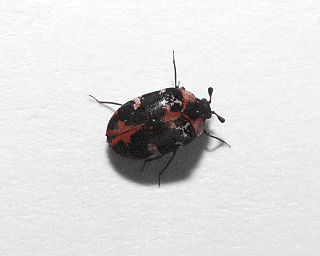
Anthrenus (Anthrenus) scrophulariae, also known as the common carpet beetle or buffalo carpet beetle, is a species of beetle originally found in Europe, the Middle East and the Nearctic, which has now spread to most of the world. Adult beetles feed on pollen and nectar, but the larvae feed on animal fibres and can be damaging pests to carpets, fabrics and museum specimens.
Pachyschelus is a genus of metallic wood-boring beetles in the family Buprestidae. There are at least 270 described species in Pachyschelus.
Sinoxylon ceratoniae is a species of horned powder-post beetles in the family Bostrichidae. It is found in Africa, Europe, and Northern Asia.

Asclera is a genus of false blister beetles in the family Oedemeridae. There are about six described species in Asclera.

Anthrenini is a tribe of beetles in the family Dermestidae. There are at least 100 described species in Anthrenini.

Cymatodera is a genus of checkered beetles in the family Cleridae. There are at least 70 described species in Cymatodera.
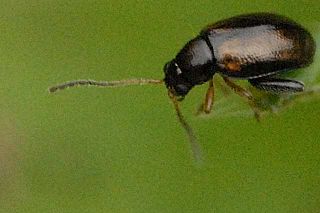
Phyllotreta is a genus of flea beetles in the family Chrysomelidae. There are at least 300 described species worldwide.
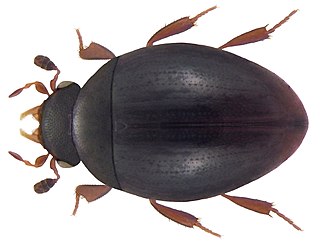
Megasternum concinnum is a species of water scavenger beetle in the family Hydrophilidae. It is found in Africa, Europe and Northern Asia, and North America.
Acritus komai is a species of clown beetles in the family Histeridae. It is found in Africa, Australia, Europe and Northern Asia, North America, Oceania, and Southern Asia.
Smicrips is a genus of palmetto beetles in the family Smicripidae. There are at least 2 described species in Smicrips.
Apsectus araneorum is a species of carpet beetle in the family Dermestidae. It is found in North America.
Apsectus hispidus is a species of carpet beetle in the family Dermestidae. It is found in North America.
Psammodius basalis is a species of aphodiine dung beetle in the family Scarabaeidae. It is found in Europe and Northern Asia and North America.
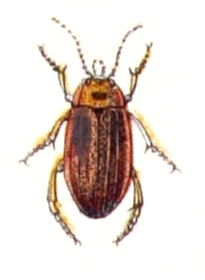
Rhantus frontalis is a species of predaceous diving beetle in the family Dytiscidae. It is found in Europe and Northern Asia and North America.
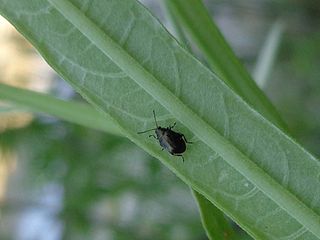
Chaetocnema concinna, known generally as the brassy flea beetle, is a species of flea beetle in the family Chrysomelidae. Other common names include hop flea beetle, beet flea beetle, and brassy-toothed flea beetle. It is found in Europe and Northern Asia and North America.
Pediacus fuscus is a species of flat bark beetle in the family Cucujidae. It is found in Europe and Northern Asia and North America.

Limnichidae, commonly called minute marsh-loving beetles, is a family of beetles belonging to Byrrhoidea. There are at least 30 genera and 350 described species in Limnichidae. They are found worldwide, with the greatest diversity in tropical regions. Most species seem to be associated with water-adjacent habitats, such as riparian and coastal locations, though many species are likely fully terrestrial, with some species being associated with leaf litter and arboreal habitats. Species with known diets feed on moss or algae. The oldest fossils of the family are known from mid-Cretaceous Burmese amber from Myanmar.

Throscidae is a family of elateroid beetles found worldwide with around 150 species in 5 extant genera. The larvae are soil-dwelling, siphoning fluid from mycorrhizae attached to trees. The adults are short-lived, with the adult males being noted for a complex mating dance. Like some other elateroids, they are capable of clicking.

Anthrenops is a subgenus of the genus Anthrenus of the subfamily Megatominae within the family of skin beetles. Subgenus is distinguished by antennae with 9 segments.











